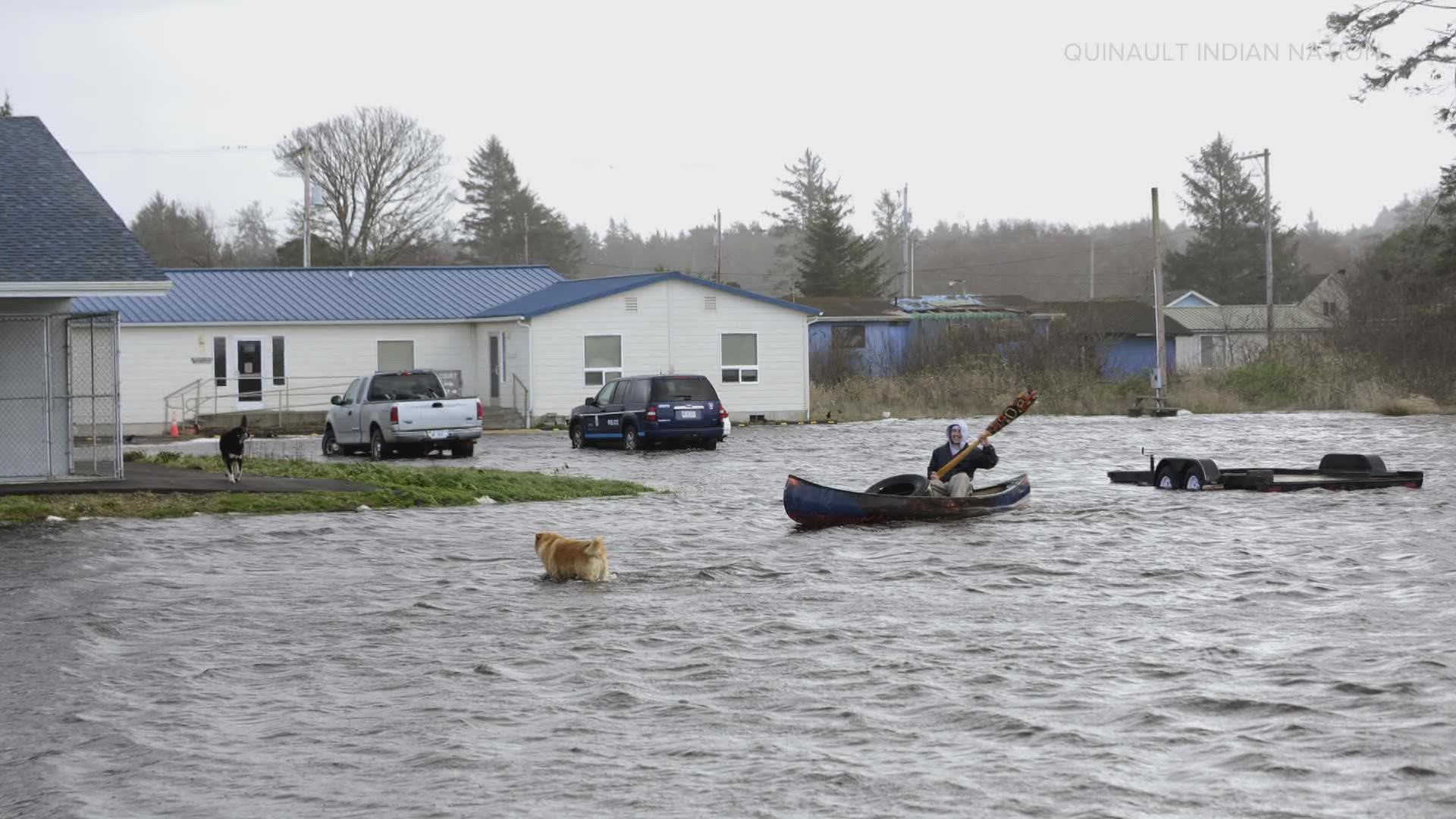TAHOLAH, Wash. — Editor's note: The above video on the Quinault Indian Nation's relocation project originally aired October 31, 2022.
The Quinault Indian Nation will receive $25 million as part of a federal funding package aimed at supporting the relocation of tribal communities affected by climate change.
The Quinault is one of three communities, along with Alaska's Newtok Village and Native Village of Napakiak, to receive $25 million grants from the Department of the Interior. FEMA also has awarded or is in the process of awarding approximately $17.7 million to assist the three communities.
“This is incredibly welcome and exciting news for our community. We have been telling our story for a long time and we deeply appreciate the support," said Chairman of the Quinault Indian Nation Guy Capoeman in a statement. "Our selection as one of just three tribes in the entire country to receive this funding recognizes the huge risks we face and is also a reward for the planning and progress we’ve already made. We are ready to move and now we can really step up the difficult and expensive work to get our people out of harm’s way.”
Efforts have been underway for the Quinault to relocate its estimated 660 residents of the Tahloah Village, which is located at the confluence of the Quinault River and Pacific Ocean. Just seven feet above sea level, the village is vulnerable to sea level rise and river flooding, as well as tsunami risks.
“The relocation project is vital to our existence here,” Ryan Hendricks, who is heading up the construction of 59 homes in the hills above the coastal village, told KING 5 in October.
The Quinault have plans to build another 150 homes, enough for all the families and the estimated 660 residents who live near the beach, on higher ground about a half-mile from the beach.
“Slowly start bringing everyone out of the ‘scary zone,’” said Hendricks.
Tsunami risks have always been a concern, said Hendricks, but recently, winter storms brought flood waters to the village, despite a seawall between the beach and homes.
“Once we start ripping into the king tides, with lots of precipitation, it tops the top of this [seawall] pretty easy,” said Hendricks.
Kaylah Mail is about to leave the home her grandparents built. She doesn’t feel the home is safe for her family anymore.
“There’s been king tides where they’ve evacuated us, came to our house, knocking on the door at 11 at night saying, ‘You need to leave your house!’ It’s nerve-wracking, it’s terrifying and my kids are absolutely the first thing I think about,” said Mail.
The Quinault Indian Nation used $10 million of the tribe’s funds to build the Generations Building on higher ground last year.
It houses a child care center, a senior facility and space that can be used as a potential tsunami shelter.
In December, the federal government will begin a community-driven 120-day planning period that will include the Interior Department and partnering federal agencies traveling to the communities.
A tribal relocation coordinator, funded by the Bureau of Indian Affairs' branch of Tribal Climate Resilience, will manage implementation in each community, as well as oversee a local support team and serve as the main point of contact.

